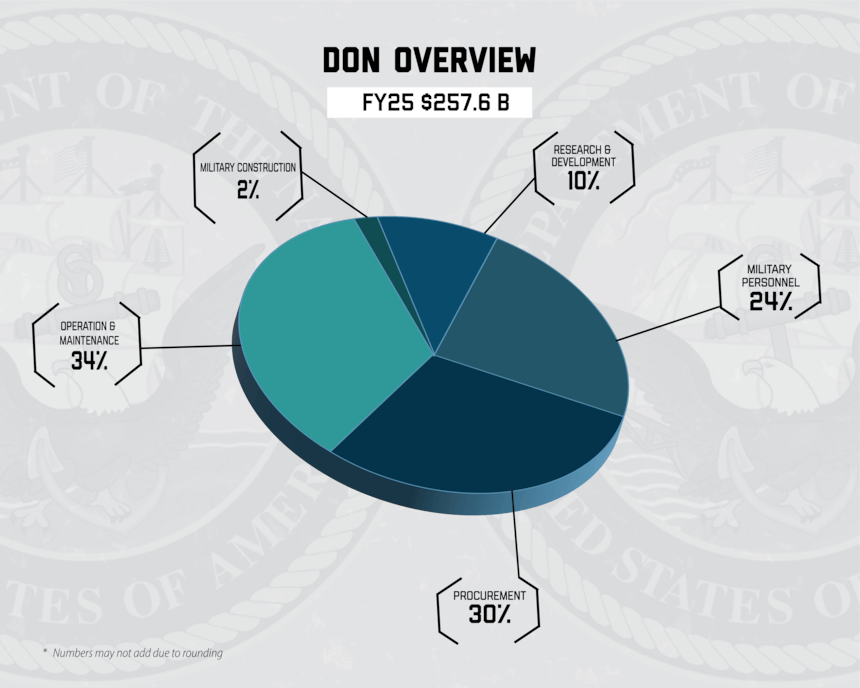

In our previous blog post, we acknowledged the importance of defining requirements before diving into the intricacies of Navy budget analysis.
We appreciate the insightful feedback received from a reader who highlighted this point, and we recognize the valuable insights it brings to our exploration of the Navy’s budget.
The US Navy plays a vital role in global security and national defense. As the geopolitical landscape evolves, it’s crucial to assess current plans for strengthening the Navy’s capabilities. This analysis will delve into various proposals and strategies, aiming to foster a well-rounded understanding.
To gain further insights into the Navy’s FY25 budget request, let’s take a moment to view a C-SPAN video featuring a press briefing by Navy officials. This briefing delves into the details of the proposed budget and its implications for strengthening the Navy.
Building a Stronger Navy
Building a stronger Navy requires a comprehensive understanding of its present and future needs. We explored critical areas like artificial intelligence (AI) and unmanned systems in our “Charting the Course – The Future of Naval Power” series.
We also delved into the DDG(X) program, the next-generation guided-missile destroyer envisioned as the backbone of the future surface fleet. You can find a more detailed analysis of the DDG(X) program within the series and by clicking here the summary of the series.
Evaluating Strengthening Plans
This framework focuses on several key criteria:
- Cost-effectiveness: We will analyze the financial feasibility of each plan, considering both upfront costs and long-term maintenance expenses. While we may not have in-house accounting expertise to conduct an in-depth line-by-line budget analysis of each plan, we are committed to evaluating the broader financial feasibility based on credible data sources such as official Navy reports and analyses from respected think tanks.
- Impact on Fleet Capabilities: The effectiveness of each plan in enhancing the Navy’s operational capabilities will be a critical evaluation point. This includes factors like firepower, survivability, and mission versatility.
- Alignment with Strategic Objectives: We will assess how well each plan aligns with the Navy’s long-term strategic goals and national defense priorities.
- Technological Considerations: The evaluation will take into account the technological feasibility and adaptability of each plan in light of evolving defense technology.
To conduct this analysis, we will rely on a variety of data sources. These include official Navy reports, independent analyses from think tanks, and insights from experienced naval experts.
By considering diverse perspectives and utilizing credible data, we aim to present a balanced and informative evaluation.
Examining Existing Programs
The DDG(X) program, among others, is a significant initiative aimed at modernizing the Navy’s fleet. A dedicated section within this analysis can detail the specific features and potential impact of the DDG(X) program in light of the established evaluation criteria. (Here, you can delve deeper into the DDG(X) program) [Refer to previous outline for details on how to approach the DDG(X) analysis]
Other Strengthening Plans: While the DDG(X) program represents a significant initiative, it’s important to acknowledge the existence of other proposals for strengthening the Navy. We are committed to analyzing these plans as well, utilizing the established evaluation framework.
Seeking Balanced Perspectives
Engaging with experienced analysts and experts from diverse backgrounds is vital for a comprehensive evaluation. We will actively seek out a range of viewpoints to ensure a balanced and informative discussion. This includes considering the perspectives expressed by stakeholders like Rep. Rob Wittman.
The quote from Rep. Wittman (March 11 statement) exemplifies the ongoing debate surrounding Navy force structure and shipbuilding cadence. By incorporating a variety of voices, we strive to present a nuanced picture of the challenges and opportunities facing the US Navy.
Moving Forward
Through this evaluation, we hope to contribute to a well-informed conversation regarding the future of the US Navy. By analyzing existing plans and fostering a dialogue with experts, we can help chart a course towards a stronger and more effective maritime force. We will continue this discussion in future blog posts, delving deeper into specific plans and the findings of our analysis.
Call to Action
We encourage our readers to share their feedback and suggestions for additional resources, especially regarding the financial aspects of these plans. Your input is valuable in ensuring a well-rounded analysis. We also invite you to engage on our social media Facebook page by following the links beloe to share your thoughts on strengthening the US Navy.

